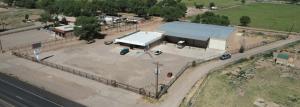The rice husk ash manufacturing plant report covers various aspects like trends, setup, cost, expenses, raw material, infrastructure & machinery requirements.
BROOKLYN, NEW YORK, UNITED STATES, March 1, 2024 /EINPresswire.com/ — IMARC Group’s report titled “Rice Husk Ash Manufacturing Plant Project Report 𝟐𝟎𝟐𝟒: 𝐈𝐧𝐝𝐮𝐬𝐭𝐫𝐲 𝐓𝐫𝐞𝐧𝐝𝐬, 𝐏𝐥𝐚𝐧𝐭 𝐒𝐞𝐭𝐮𝐩, 𝐌𝐚𝐜𝐡𝐢𝐧𝐞𝐫𝐲, 𝐑𝐚𝐰 𝐌𝐚𝐭𝐞𝐫𝐢𝐚𝐥𝐬, 𝐈𝐧𝐯𝐞𝐬𝐭𝐦𝐞𝐧𝐭 𝐎𝐩𝐩𝐨𝐫𝐭𝐮𝐧𝐢𝐭𝐢𝐞𝐬, 𝐂𝐨𝐬𝐭 𝐚𝐧𝐝 𝐑𝐞𝐯𝐞𝐧𝐮𝐞” provides a comprehensive guide for establishing a rice husk ash manufacturing plant. The report covers various aspects, ranging from a broad market overview to intricate details like unit operations, raw material and utility requirements, infrastructure necessities, machinery requirements, manpower needs, packaging and transportation requirements, and more.
In addition to the operational aspects, the report also provides in-depth insights into rice husk ash manufacturing process, project economics, encompassing vital aspects such as capital investments, project funding, operating expenses, income and expenditure projections, fixed and variable costs, direct and indirect expenses, expected ROI, net present value (NPV), profit and loss account, and thorough financial analysis, among other crucial metrics. With this comprehensive roadmap, entrepreneurs and stakeholders can make informed decisions and venture into a successful rice husk ash manufacturing unit.
𝐒𝐚𝐦𝐩𝐥𝐞 𝐑𝐞𝐪𝐮𝐞𝐬𝐭: https://www.imarcgroup.com/rice-husk-ash-manufacturing-plant-project-report/requestsample
Customization Available:
• Plant Location
• Plant Capacity
• Machinery- Automatic/ Semi-automatic/ Manual
• List of Machinery Provider
Rice husk ash (RHA) is a byproduct derived from the burning of rice husks, a common waste product of rice milling, where rice paddy is processed to obtain the edible rice grain. The ash predominantly consists of silica (SiO2) in amorphous form, along with small amounts of carbon and trace minerals. This amorphous silica is highly preferred in various industries due to its pozzolanic properties, which means it can react with calcium hydroxide and water to form compounds possessing cementitious properties. Consequently, RHA is extensively utilized as a supplementary cementitious material (SCM) in the construction industry, enhancing the strength and durability of concrete while reducing its carbon footprint. Its high silica content also makes it valuable in the manufacture of refractories, silicon compounds, and ceramics. Beyond industrial applications, RHA serves roles in agriculture as a soil amendment, in water purification systems as an adsorbent, and in the production of insulative materials and green concrete, reflecting its versatility and eco-friendly credentials.
The global rice husk ash market is primarily driven by the increasing demand for green construction materials and the widespread emphasis on sustainable agricultural practices. The construction sector is witnessing a significant shift towards sustainability, prompting the integration of eco-friendly materials like RHA in building applications. Its utility as a supplementary cementitious material helps reduce the cement industry’s carbon footprint by partially substituting Portland cement, which is energy-intensive and a substantial CO2 emitter. RHA enhances concrete’s mechanical properties and durability, which aligns with the growing regulatory and societal push for sustainable construction practices. This demand is further bolstered by the rising urbanization and infrastructural development in emerging economies, where the emphasis is on both economic and environmental sustainability.
Moreover, the market is influenced by the increasing recognition of rice husk ash in various industrial applications beyond construction. Its role in producing silica-based products, such as silicon carbide and silicon nitride, is crucial for the electronics and automotive industries, where these compounds are valued for their hardness and high-temperature resilience. Additionally, RHA’s application in waste water treatment, as it effectively removes heavy metals and dyes, aligns with the global move towards environmental protection and the circular economy. The agriculture sector also benefits from RHA’s usage as a soil amendment, where its silica content helps improve soil texture and plant resistance to pests and diseases. The versatility of RHA, combined with a growing global focus on waste valorization, positions it as a key player in the market, driven by innovation, sustainability, and the escalating demand for environmentally friendly products across multiple industries.
Insights Covered the Rice Husk Ash Report
Market Coverage:
• Market Trends
• Market Breakup by Segment
• Market Breakup by Region
• Price Analysis
• Impact of COVID-19
• Market Forecast
Key Aspects Required for Setting Up a Rice Husk Ash Plant
Detailed Process Flow:
• Product Overview
• Unit Operations Involved
• Mass Balance and Raw Material Requirements
• Quality Assurance Criteria
• Technical Tests
Project Details, Requirements and Costs Involved:
• Land, Location and Site Development
• Plant Layout
• Machinery Requirements and Costs
• Raw Material Requirements and Costs
• Packaging Requirements and Costs
• Transportation Requirements and Costs
• Utility Requirements and Costs
• Human Resource Requirements and Costs
Project Economics:
• Capital Investments
• Operating Costs
• Expenditure Projections
• Revenue Projections
• Taxation and Depreciation
• Profit Projections
• Financial Analysis
𝐀𝐬𝐤 𝐀𝐧𝐚𝐥𝐲𝐬𝐭 𝐟𝐨𝐫 𝐂𝐮𝐬𝐭𝐨𝐦𝐢𝐳𝐞𝐝 𝐑𝐞𝐩𝐨𝐫𝐭: https://www.imarcgroup.com/request?type=report&id=11652&flag=C
Key Questions Addressed in This Report:
• How has the rice husk ash market performed so far and how will it perform in the coming years?
• What is the market segmentation of the global rice husk ash market?
• What is the regional breakup of the global rice husk ash market?
• What are the price trends of various feedstocks in the rice husk ash industry?
• What is the structure of the rice husk ash industry and who are the key players?
• What are the various unit operations involved in a rice husk ash manufacturing plant?
• What is the total size of land required for setting up a rice husk ash manufacturing plant?
• What is the layout of a rice husk ash manufacturing plant?
• What are the machinery requirements for setting up a rice husk ash manufacturing plant?
• What are the raw material requirements for setting up a rice husk ash manufacturing plant?
• What are the packaging requirements for setting up a rice husk ash manufacturing plant?
• What are the transportation requirements for setting up a rice husk ash manufacturing plant?
• What are the utility requirements for setting up a rice husk ash manufacturing plant?
• What are the human resource requirements for setting up a rice husk ash manufacturing plant?
• What are the infrastructure costs for setting up a rice husk ash manufacturing plant?
• What are the capital costs for setting up a rice husk ash manufacturing plant?
• What are the operating costs for setting up a rice husk ash manufacturing plant?
• What should be the pricing mechanism of the final product?
• What will be the income and expenditures for a rice husk ash manufacturing plant?
• What is the time required to break even?
• What are the profit projections for setting up a rice husk ash manufacturing plant?
• What are the key success and risk factors in the rice husk ash industry?
• What are the key regulatory procedures and requirements for setting up a rice husk ash manufacturing plant?
• What are the key certifications required for setting up a rice husk ash manufacturing plant?
𝐁𝐫𝐨𝐰𝐬𝐞 𝐎𝐭𝐡𝐞𝐫 𝐑𝐞𝐩𝐨𝐫𝐭𝐬 𝐛𝐲 𝐈𝐌𝐀𝐑𝐂 𝐆𝐫𝐨𝐮𝐩:
Project Report of Rice Husk Based Bio Ethanol Manufacturing Plant
Project Report of Rice Husk Based Cups and Plates Manufacturing Plant
About Us:
IMARC Group is a leading market research company that offers management strategy and market research worldwide. We partner with clients in all sectors and regions to identify their highest-value opportunities, address their most critical challenges, and transform their businesses.
IMARC Group’s information products include major market, scientific, economic and technological developments for business leaders in pharmaceutical, industrial, and high technology organizations. Market forecasts and industry analysis for biotechnology, advanced materials, pharmaceuticals, food and beverage, travel and tourism, nanotechnology and novel processing methods are at the top of the company’s expertise.
Elena Anderson
IMARC Services Private Limited
+1 631-791-1145
[email protected]
![]()
Originally published at https://www.einpresswire.com/article/692534611/rice-husk-ash-manufacturing-plant-report-on-raw-material-requirements-and-cost-for-setup-an-unit




